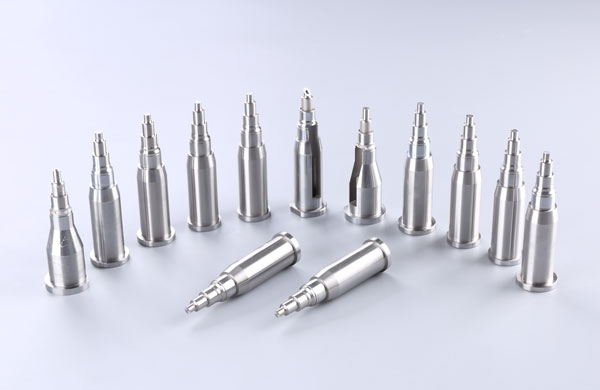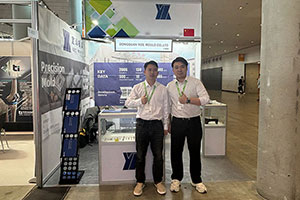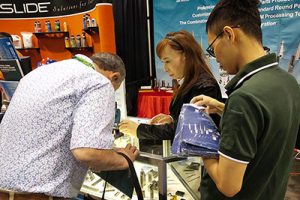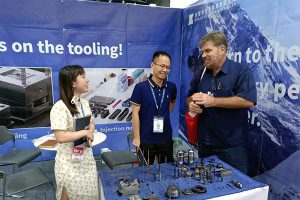What Are the Differences Between High – Speed Steel and Tungsten Carbide?
In the vast field of metal materials and tool manufacturing, high – speed steel (HSS) and tungsten carbide shine like two bright stars, playing crucial roles in many areas with […]
In the vast field of metal materials and tool manufacturing, high – speed steel (HSS) and tungsten carbide shine like two bright stars, playing crucial roles in many areas with their unique properties. However, they have significant differences in terms of composition, characteristics, and application fields. Next, the editor from Yize will conduct an in – depth exploration and elaboration of the differences between high – speed steel and tungsten carbide, aiming to provide readers with a clear understanding.
Unveiling the Composition
High – Speed Steel: A Precisely Proportioned Complex Alloy
High – speed steel is a complex alloy steel, like a carefully blended “element mix”. Its main components include carbon (C), molybdenum (Mo), cobalt (Co), tungsten (W), chromium (Cr), etc. These elements work together, endowing high – speed steel with unique properties. The carbon content is generally between 0.70 and 1.65%, and the total amount of alloying elements can reach 10 – 25%. This precise composition ratio is like a “performance code” tailor – made for high – speed steel, determining its outstanding performance in various application scenarios.
Our factory business: carbide parts, mold parts, medical injection molds, precision injection molds, teflon PFA injection molding, PFA tube fittings. email: [email protected],whatsapp:+8613302615729.
Tungsten Carbide: A Wonderful Combination of Tungsten Carbide Particles and Binders
Tungsten carbide, also known as hardmetals, is a composite material composed of tungsten carbide (WC) particles and a metal binder (such as cobalt Co). The grain size of the carbide component (or phase) is usually between 0.2 and 10 micrometers, and the metal binder acts like “glue” to tightly bind these tungsten carbide particles together. In addition to cobalt (Co), common binders also include nickel (Ni), iron (Fe), or other metals and alloys in specific applications. This unique combination gives tungsten carbide distinct characteristics.

A Competition of Characteristics
High – Speed Steel: The Versatile Performer with Excellent Properties
- Wear Resistance and Hardness: High – speed steel boasts outstanding hardness and wear resistance, like a battle – hardened warrior wearing a tough armor. It performs exceptionally well in high – load and high – speed working environments, such as cutting, stamping, and cold extrusion.
- High – Temperature Strength: Under high – temperature conditions, high – speed steel can still maintain high hardness and strength. This makes it a capable assistant for high – temperature cutting and heat – treatment applications, unafraid of high – temperature challenges.
- Corrosion Resistance: The alloying components of high – speed steel act like an invisible shield, endowing it with excellent corrosion resistance. Even in corrosive environments, it can function normally, safeguarding industrial production.
- Cutting Performance: With its remarkable hardness and wear resistance, high – speed steel has become the preferred material for manufacturing cutting tools and tools, playing an irreplaceable role in the machining field.
Tungsten Carbide: The King in High – Temperature Fields
- High Hardness and Wear Resistance: The hardness and wear resistance of tungsten carbide are truly outstanding. Even at a high temperature of 500°C, it remains stable and basically unchanged; at 1000°C, it still maintains high hardness, demonstrating strong stability.
- High Melting Point and High Density: Tungsten carbide has a very high melting point and high density, making it like a firm guard in high – temperature environments and not easy to soften. It is suitable for manufacturing high – temperature tools and parts.
- High – Temperature Resistance: In extreme high – temperature fields such as aerospace and nuclear energy, tungsten carbide has become an indispensable key material for the development of high – tech industries due to its stable mechanical properties.
Different Application Fields
High – Speed Steel: The Capable Assistant in Traditional Manufacturing
With its excellent wear resistance, high – temperature strength, and corrosion resistance, high – speed steel shines in the general machinery manufacturing field. Whether it’s automobile parts, cutting tools, forging dies, or cold stamping dies, high – speed steel can be seen everywhere. Especially in the field of cutting tool manufacturing, high – speed steel has won the favor of many manufacturers with its outstanding cutting performance.
Tungsten Carbide: The Darling of High – Tech Industries
Due to its high density, high melting point, and excellent high – temperature resistance, tungsten carbide has become the darling of high – tech industries. In fields such as aerospace, nuclear energy, and the electronics industry, the high – temperature stability and high hardness of tungsten carbide make it an ideal material for manufacturing high – precision and high – performance components, driving the continuous development of high – tech industries.
The Contest of Price and Cost
High – Speed Steel: The Affordable Option
As an alloy steel, high – speed steel has a relatively affordable price and low cost. This makes it widely applicable in the general machinery manufacturing field and has become one of the preferred materials for many enterprises.
Tungsten Carbide: High – End Quality and Price
As a hardmetal material, tungsten carbide has a relatively high price and high cost. This is mainly because the production process of tungsten carbide is complex and requires the use of rare metal tungsten and other raw materials. However, as the saying goes, “you get what you pay for”. The unique properties of tungsten carbide make it irreplaceable in high – tech industries.
Summary
In conclusion, high – speed steel and tungsten carbide have significant differences in terms of composition, characteristics, and application fields. High – speed steel occupies an important position in the traditional machinery manufacturing field with its excellent comprehensive properties; while tungsten carbide plays a key role in high – tech industries with its outstanding high – temperature performance. Understanding the differences between these two materials helps us choose and use them more precisely according to different needs, providing strong support for the development of various industries.
Professional tungsten steel processing manufacturer–Dongguan Yize Mould provides you with: tungsten steel mold, tungsten steel processing, tungsten steel roll, tungsten steel blade, carbide, tungsten steel punch and other products. Welcome to call +86 13302615729 (WeChat, Whatsapp same number) for more information.






